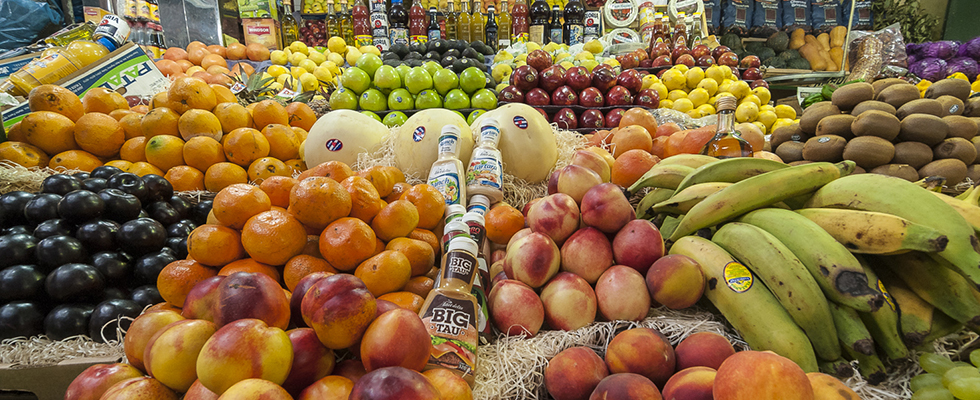9.00am | Latin America in Liniers
Present in tours
Many Peruvians and Bolivians live well off the tourist trail in the Liniers neighbourhood, in the far west of the city, and there they've created a market that can equal many in their native countries.
How to reach the market
The Sarmiento train line, and many local buses go to Liniers train station at Av. Rivadavia 11599, which is just two blocks away from the market. The market begins at the corner of Ibarrola and José León Suárez.
When to go
The market's open every day, but is busiest at the weekend.
What to buy
In the morning, you can find fresh fruit and vegetables, including many varities brought from Brazil, including papaya, mango and pommegranate. The choice and prices are so good, that many greengrocers in the city come here to buy their produce.
Another big draw are the stalls selling dried fruits and nuts, spices, and Andean cooking ingredients, often at wholesale prices. You can buy fried corn or plantain chips, to eat with a beer later (you can buy Peru's Cuzqueña beer here), as well as dried chilli, and all kinds of flour, cereals and sweets in packs of up to 5kg.
This is one of the few places in Buenos Aires that it's possible to find certain Peruvian ingredients such as yellow chilli for making ceviche, rocoto chilli, herbs such as huacatay, often used in Peruvian dishes, and Andean potatoes of all shapes and sizes.
There are also stands selling artistanal crafts, effigies of Ekeko (the god of abundance) and items used in religious cermonies dedicated to the Pachamama (Mother Earth), which make good souvenirs or gifts. There are bags containing miniature items representing requests to the Pachamama (from good seeds, to a house or a car), coca leaves, coa (an Andean vegetable) and a silver serpent representing money. All the contents of these bags is burned, and the smoke of the coa is supposed to take the request to heaven.
Other stands offer souvenirs, piñatas, and some outlandishly sized cakes for celebrations.
Part of the market is dedicated to clothing and shoes, with many replicas of famous brands.
Where to eat
You can have breakfast in the street while you browse the market. There are stands selling humitas (tasty snacks made from a dough of boiled corn) and chipás (cheese rolls), and freshly squeezed orange juice, or a type of peach juice made from dried peaches boiled with cinnamon, sugar and cloves, and often sold from carts in plastic cups or bags, like in the street in Bolivia. A more filling option is to go for Salteña-style empanadas, which you can pick up at Pollo Broaster, at Ibarrola 7239, or Salteñería el Conejo, at José León Suárez 216.
Cementerio de Flores
To further explore Buenos Aires' Latin American communities, you could make a stop at the cementery in Flores, where the Bolivian community often bury loved ones. Located on Au. Perito Moreno, this cementery is always busy on the Day of the Dead on November 2, when whole families attend to visit the burial places of their loves ones, and put offerings on the tombstones while sharing food, drink and prayers.

